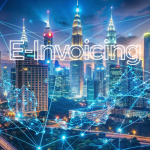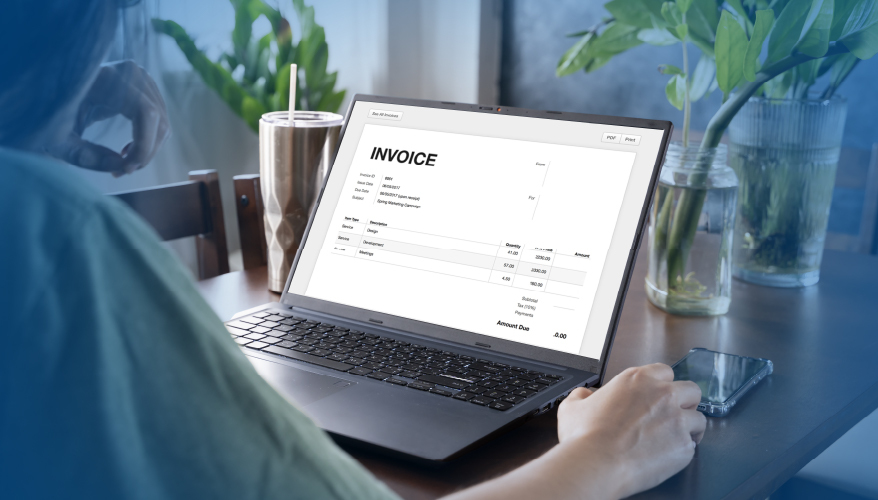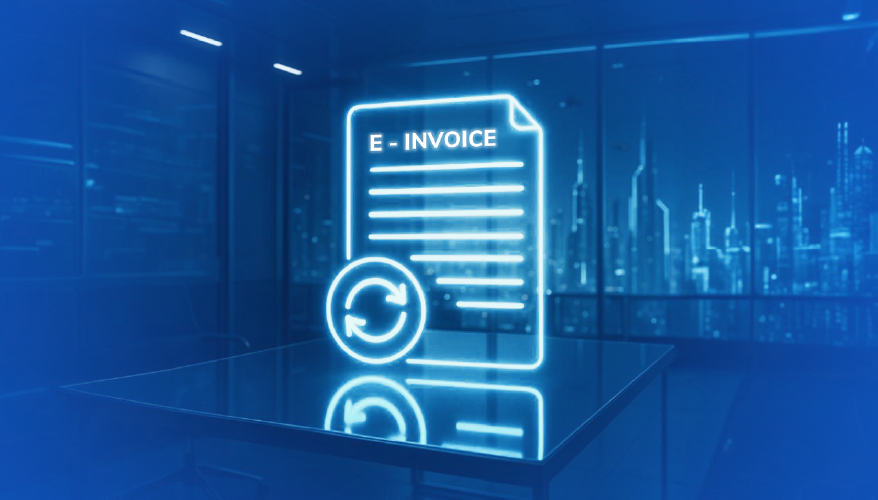
Key Updates: Malaysia e-Invoice Guideline Version 2.3
May 3, 2024
E-Invoicing in Malaysia | E-Invoicing Data Fields | E-Invoice Schema
August 13, 2024Understanding e-Invoice Scenarios | e-Invoicing in Malaysia

The Malaysian government’s e-Invoicing initiative is revolutionizing how businesses create, manage, and exchange invoices. This mandatory system aims to streamline tax processes, improve transparency, and enhance efficiency throughout the commercial landscape. Through this article, we will dive into various e-Invoicing scenarios, explaining the flow, transactions, scope, and finer points for different business interactions.
This offers a potential avenue for Malaysian businesses to streamline international trade with a standardized system, facilitating secure electronic exchange of business documents, akin to a universal language for invoices and purchase orders. By adopting PEPPOL, Malaysian companies can benefit from enhanced security, greater efficiency, and simplified document exchange with international trading partners.
The Inland Revenue Board of Malaysia (IRBM) has implemented a strategic, multi-phase rollout plan for e-Invoicing in Malaysia.
Note: The new e-Invoicing system requires digital invoices in XML or JSON format.
This flexibility streamlines transactions beyond traditional seller-issued invoices. When required to issue a self-billed e-Invoice, the buyer submits it to the IRB for validation. Once validated, it serves as valid proof of expense for the buyer, ensuring smooth record-keeping and tax compliance.
For e-Invoicing through PEPPOL:
e-Invoicing in Malaysia
The Malaysian government is adopting e-Invoicing, with the Inland Revenue Board of Malaysia (IRBM) leading the initiative, and the Malaysia Economic Development Corporation (MDEC) accrediting Malaysia’s Pan-European Public Procurement Online (PEPPOL) service providers (PSPs) and PEPPOL ready solution providers (PRSPs), specifying Malaysia PINT requirements and standards, governing the overall PEPPOL framework compliance and promote the business adoption of e-Invoicing in Malaysia.This offers a potential avenue for Malaysian businesses to streamline international trade with a standardized system, facilitating secure electronic exchange of business documents, akin to a universal language for invoices and purchase orders. By adopting PEPPOL, Malaysian companies can benefit from enhanced security, greater efficiency, and simplified document exchange with international trading partners.
The Inland Revenue Board of Malaysia (IRBM) has implemented a strategic, multi-phase rollout plan for e-Invoicing in Malaysia.
- Phase 1 – Starting August 1, 2024: e-Invoicing becomes mandatory for businesses with annual revenue or sales exceeding RM100 million (previously June 1, 2024).
- Phase 2 – Starting January 1, 2025: Mandatory for taxpayers with annual turnover or revenue of >RM25 million and up to RM100 million.
- Phase 3 – Starting July 1, 2025: e-Invoicing will be mandatory for all taxpayers (individuals and legal entities) with annual turnover or revenue of more than RM 150,000.
What is an e-Invoice?
In Malaysia, e-Invoices are the digital replacements for traditional paper invoices and other electronic documents like credit notes, debit notes, and refund notes. These digital documents capture essential transaction details like supplier and buyer information, item descriptions, quantities, and tax calculations. This standardized format ensures clear, secure, and efficient record-keeping for both sellers and buyers.Note: The new e-Invoicing system requires digital invoices in XML or JSON format.
Scope and Transactions
Here’s a breakdown of what falls under the e-Invoicing umbrella:1. Business-to-Business (B2B):
B2B transactions form the core of e-Invoicing in Malaysia. This encompasses all commercial transactions between registered businesses, fostering a standardized and auditable record-keeping system for both parties. Here are some specific examples:- A manufacturer supplying raw materials to a production company.
- A distributor selling finished products to retail stores.
- A consulting firm providing services to another business.
2. Business-to-Government (B2G):
e-Invoicing plays a crucial role in B2G transactions, which involves the sale of goods and services by businesses to government agencies or departments. Here’s how:- Streamlined Procurement Processes: e-Invoicing eliminates manual paperwork and automates data exchange, leading to faster and more efficient procurement processes for government bodies.
- Increased Transparency: The standardized format and digital nature of e-Invoices ensure transparency in public spending, allowing for better auditing and tracking of government funds.
- Reduced Risk of Errors: e-Invoicing helps to minimize errors associated with manual data entry, leading to greater accuracy in financial transactions between businesses and the government.
- A construction company contracted by a government agency to build roads.
- An IT firm providing software solutions to a government department.
3. Business to Consumers (B2C):
While e-Invoices aren’t mandatory for individual consumer purchases, businesses can continue issuing traditional invoices or receipts as they currently do. For B2C transactions involving recurring payments or bulk purchases (e.g., subscriptions), businesses may consider issuing consolidated e-Invoices to IRBM, within seven (7) calendar days after the month end to streamline record-keeping and potentially meet future compliance requirements.4. Self Billed Invoices:
The Malaysian e-Invoicing system offers an option for “self-billed” e-Invoices. In specific situations, the buyer can act as the issuer on behalf of the seller. This applies to transactions like imports (purchase from foreign suppliers), exports (sales to foreign buyers), payments to agents, transactions with individuals, interest payments to the public, claim, compensation, benefit or even dividend payouts. The Inland Revenue Board (IRB) has provided further details for e-commerce transactions.This flexibility streamlines transactions beyond traditional seller-issued invoices. When required to issue a self-billed e-Invoice, the buyer submits it to the IRB for validation. Once validated, it serves as valid proof of expense for the buyer, ensuring smooth record-keeping and tax compliance.
e-Invoice Process Flow in Malaysia
- Seller/Issuer Generates e-Invoice: The seller/issuer generates am e-Invoice following Inland Revenue Board of Malaysia (IRBM) standards.To initiate the process, the seller/issuer needs to provide invoice level data in the format mandated by the IRBM. This format ensures consistent data exchange across different systems. The IRBM format requires 55 mandatory data fields, including: a. Seller and Buyer Information: Details like company names, tax identification numbers, business registration number, MSIC code, and contact information. b. Product or Service Details: A clear description of the goods or services being sold, including quantities, unit prices, and any applicable discounts. c. Tax Calculations: The e-Invoice must accurately reflect the relevant tax rates (e.g., SST) and tax amounts payable, ensuring compliance with Malaysia’s tax regulations.
- Secure Transmission: The seller/issuer can submit the e-Invoice via the IRBM MyInvois portal (can be used only for low volume/manual) or API integration. For high volumes of e-Invoices, seller/issuer can use API integration and bulk submissions by using intermediary solutions from companies like IRIS with the IRBM system. This allows for automated data exchange between the seller’s/issuer’s accounting system and the IRBM platform.
- Validation: The IRBM system verifies the e-Invoice for format, data accuracy, and errors. Regardless of the chosen transmission method, the e-Invoice is securely sent to the IRBM for validation. The IRBM system verifies the e-Invoice against predefined standards, returning a QR code, UIN, and Validation link against the invoice.
- Notifications & Delivery: Both seller/issuer and buyer are notified. The IRBM securely transmits the validated e-Invoice to the buyer’s designated receiving system. This receiving system could be the buyer’s accounting software, enterprise resource planning (ERP) system, or a dedicated e-Invoicing platform.
- Buyer Acceptance/Rejection: The buyer electronically receives the e-Invoice from the IRBM. The buyer has the opportunity to review the e-Invoice thoroughly, ensuring the details and invoice amount are accurate. The buyer can then either accept the e-Invoice, signifying an agreement with the details, or electronically reject it within 72 hours if any discrepancies are found. This rejection request is also communicated to the seller/issuer, allowing for prompt resolution of any issues.
- QR Code Sharing: Once the e-Invoice is validated by IRBM and reviewed/accepted by the buyer, it’s the seller’s responsibility to share a copy of the e-Invoice embedded with the QR code with the buyer. This QR code can be easily accessed and scanned by the buyer using a smartphone or other devices, allowing for quick retrieval and verification of the e-Invoice details.
IRIS MyeInvois offers a Transformation Tool
Transitioning to e-Invoicing can involve a lot of data conversion. A transformation tool is a software solution that can significantly ease this process. It can convert your existing sales and purchase data (invoices, receipts) into the IRBM-compliant e-Invoice format based on the workflows defined by the users. This can save you significant time and effort in adapting to the new system.IRIS MyeInvois – A World-Class e-Invoicing System
IRIS MyeInvois can easily integrate with your current billing systems in multiple ways to facilitate the transition with zero disruption to businesses. A PEPPOL-ready, one-stop e-Invoice management platform to view, share, manage, and collaborate on invoices with customers and suppliers alike while managing the entire communication with the LHDN systems, in a hassle-free manner.For e-Invoicing through PEPPOL:
- IRIS MyeInvois Solution comes with a pre-integrated Certified PEPPOL (Pan-European Public Procurement Online (PEPPOL) Access Point.
- Businesses need to do a one-time PEPPOL Setup on the IRIS Platform and enable the sharing of validated e-Invoices through the PEPPOL framework.
- Businesses can register with MDEC, Malaysia’s PEPPOL Authority via our integrated Access Point Provider.
- Businesses can also receive validated e-Invoices from their vendors who are on the PEPPOL network.




